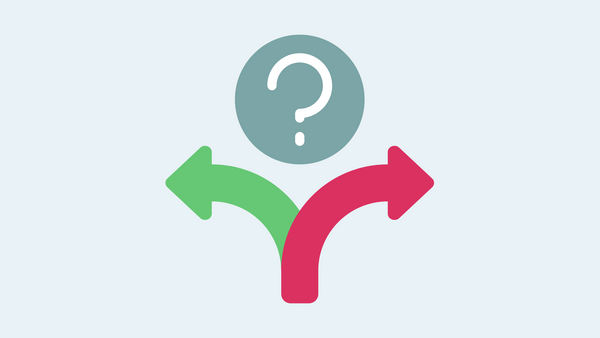Decision fatigue is a real thing. I used to be great at making decisions quickly. Sure, sometimes I made the wrong decision. But I liked the concept of failing fast. So, I got to where I would do just enough research and planning to make sure my decision was the best option. Any time spent beyond the bare minimum debating choices was wasted time in my opinion.
Somewhere along the way, things changed. I didn’t change the amount of input I needed to make a decision. I just stopped pulling the trigger. Completely.
One of the mantras I used to live by was, “It’s either a hell yes or a hell no.” When something wasn’t a hell yes, and quickly, I just didn’t proceed. But then I had a few decisions, critical ones, go south on me. That turned into a real case of analysis paralysis.
Even in some real-life or death situations. When my brother was in the hospital with COVID, I felt like I should have played a more active role in the decisions that were made about his care. I analyzed the hell out of the things that were going on. But I didn’t act. I regret that and probably will until the day I die.
Over the past few years, I’ve had other instances of critical decisions where I’ve allowed myself to be frozen with indecision. None of them were life or death choices. But they were critical mistakes.
For example, we’ve been talking about moving, within our city, for years. One of the houses we looked at doubled in value in the two years following when we walked away from the deal. That was a costly mistake.
I’ve had career opportunities I passed on that, retrospectively, would have been the best move. But, my lack of decision-making has turned into idleness.
Making decisions is never easy. But there are tools that can help you improve your decision-making process.
After years of feeling like I’ve missed the mark with my choices, I’ve decided to start tracking my decisions and the inputs that go into them and then retrospectively reviewing the outcomes.
To do that, I’ve created a Decision Matrix inside of Notion (my favorite tool these days). The idea is to capture key decisions as they are happening and then track my decision-making process and the outcome.
I’ll be using this for things such as career choices, investment decisions, life design choices (for example, we are looking at buying some land), and more.
What goes into my decision matrix
Before I created my own decision matrix, I looked for options on the internet. However, none of them fit exactly what I was looking for in terms of input. So, I created my own. Here are the fields I am tracking.
- Date logged - what it sounds like
- Decision - what’s the decision I am trying to make?
- Type - is it personal, health, life, family, career, etc.?
- Actions - what are the actions I took as part of the process? Did I research something, did I talk to someone?
- Inputs - this is the name(s) of the inputs. For example, my wife. My mother. My boss.
- Cost - what it sounds like
- Impact - will this decision have a low or high impact on my life?
- Risk - does this decision carry low or high risk associated with it?
- Time to impact - not all decisions have immediate results. So I log how long I think it will be before seeing an impact.
- Confidence level - once I make a decision, what was my confidence level?
- Summary - this is the actual decision I made.
- Retrospective - when I revisit the decision in the future, how does the outcome look? Positive or negative?
In terms of the retrospective, I typically use a timeframe that is tied to the time to impact. So, if I think a decision should have a measurable impact in three months, then I set a reminder to do a retrospective after those three months have passed.
Over time, I expect the decision matrix and regular review of the outcomes to help move me toward better decisions. I realize things won’t be perfect. I’m ok with that. I’m simply looking for incremental improvement and the removal of analysis paralysis. Because even no decision is a decision, and it’s usually a bad one.
If you'd like a copy of the Decision Matrix I am using, click the button below and then copy the template using these instructions. You will need Notion, which has a free version.
